Our intent with the initial ArcGIS Earth 1.0 release was to demonstrate and validate that we could produce a lightweight, easy-to-use experience that would be usable by non-GIS stakeholders in large organizations. So far, the feedback is that the experience is on the right track and now we have lots more work to do around additional OGC data types, new features for exploring data, and additional ‘GIS compatibility’ features that would provide common capability regardless of what data type a user is working with. While we can’t do everything at once, we do have a deep roadmap already developed and are actively working with customers to refine and update the sequence of features and experiences that we release.
We are happy to announce that the download for ArcGIS Earth 1.1 is now available. In this release, we enhanced Earth to focus on a few key capabilities that customers asked us for:
- Timesliders for KML data sets
- WMS and WMTS OGC services
- TXT/CSV file handling
- Usability and administration improvements
KML Timesliders
ArcGIS Earth now recognizes time-enabled KML. Simply add a time-enabled KML to the application and the timeslider should appear near the bottom center of the screen. Users have the ability to change the time span of information displayed on the globe, play an animation of the data in the KML, and modify the playback settings.
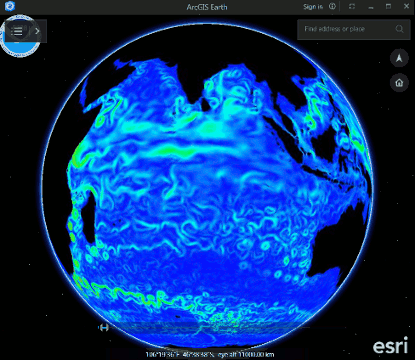
The timeslider capability will recognize and attempt to filter based upon the combined time span for all time-enabled KMLs that are currently turned on in the Table of Contents. In the future, we will look at enabling the timeslider for other types of time-enabled GIS data, such as ESRI RESTful imagery services.
OGC WMS and WMTS services
In the 1.1 release, users can now also add OGC WMS and WMTS services in both WGS84 and Web Mercator spatial reference systems. Many ArcGIS for Server customers share out map data in WMS and WMTS to expose their data in standard, interoperable services. WMTS is often used instead of WMS to pre-cache tiles that may display more quickly than WMS.
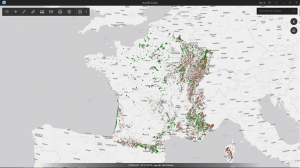
TXT/CSV file handling
Users who generate simple lists of coordinate information can directly load coordinates by CSV or TXT file into Earth. Earth has a simple interface for selecting the coordinate columns and can even load projected coordinates if there is a corresponding worldfile for the CSV.
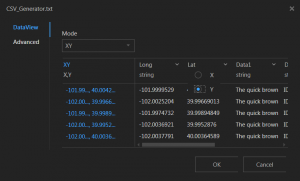
Users are able to change the stylization properties of the data by right-clicking on the layer in the TOC and users can also configure simple popups for points during import.
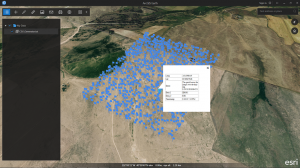
Users who are signed into a Portal for ArcGIS Server instance with a configured locator may also perform batch address geocoding. Batch address geocoding against the Esri World Geocoding Service is not yet supported in any configuration of Earth.
You cannot yet export CSV points as GIS data from Earth, but that is planned for an upcoming release.
Usability and authentication improvements
Earth 1.1 contains many incremental usability and administration improvements. Some of the notable improvements include:
- Resolved authentication issues when switching between authentication types
- Admin rights are not required when installing for a single user
- Personalization capability to turn off workspace auto-save
- Delete key now works on TOC items
- The locator displays suggestions based on typed input
- Services with sublayers now display sublayers in the TOC
- Measurements may be copied to the clipboard from the Measure interface
More coming in the future
If you haven’t downloaded ArcGIS Earth 1.1, yet, get it here: http://j.mp/ArcGISEarthDownload
As always, we are strongly interested in user input and encourage users to contribute to the ArcGIS Earth forum on GeoNet. Based on user feedback, some of the items that we are focused on in Earth in the next few updates will include:
- Visualizing large mesh data (think Drone2Map)
- Disconnected workflows (not having to be on the internet or intranet)
- GIS compatibilty features (more identify, stylization, labeling, and attribute display capabilities)
- Saving data locally (KML, SHP)
- Drawing, TOC, and measuring usability improvements
- … and a whole lot more
We look forward to hearing what you think about the latest ArcGIS Earth 1.1 improvements.
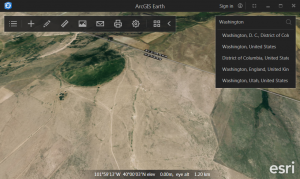

Article Discussion: